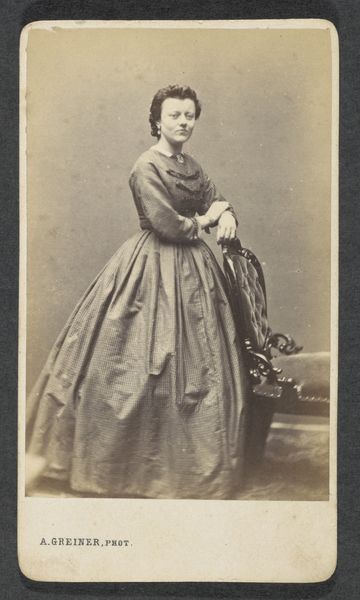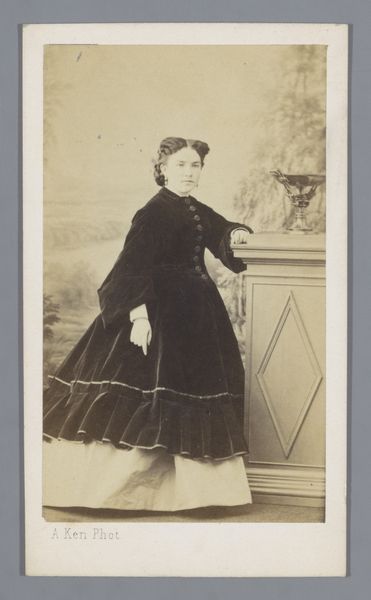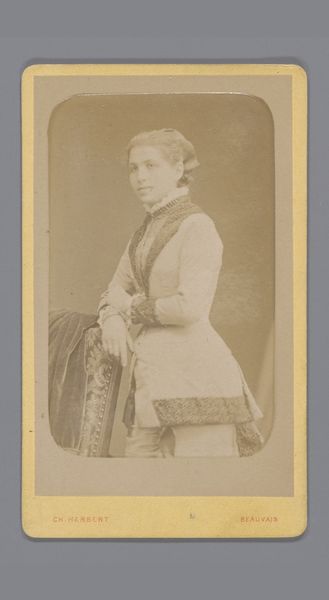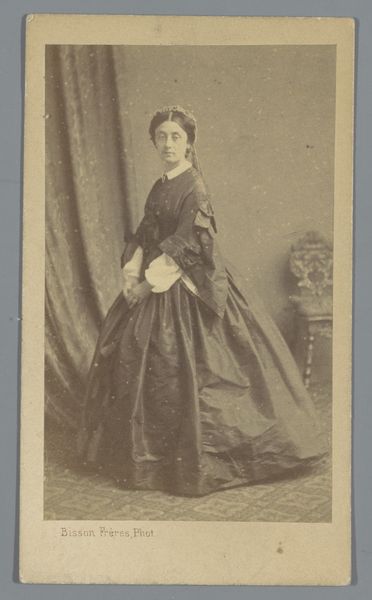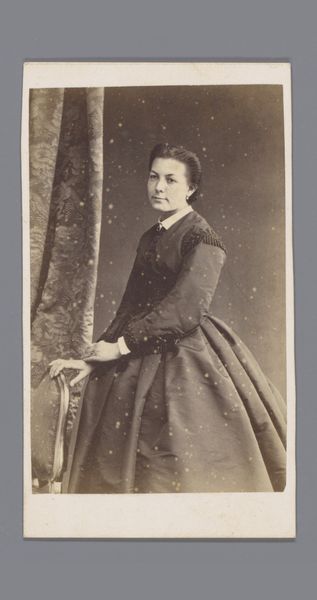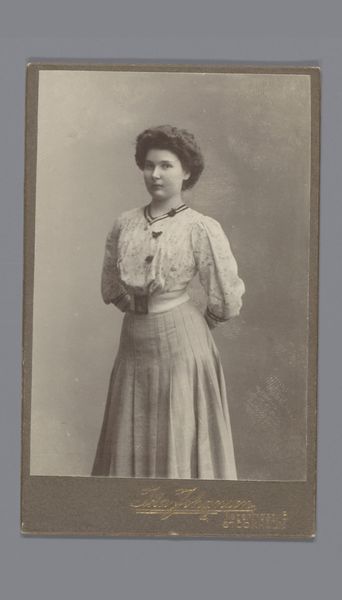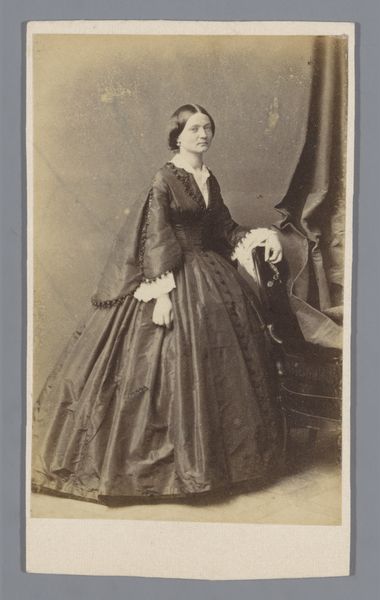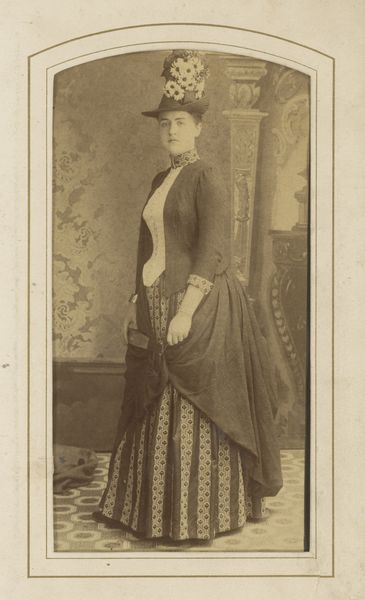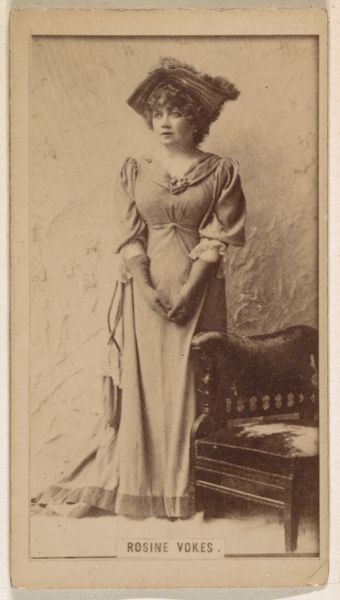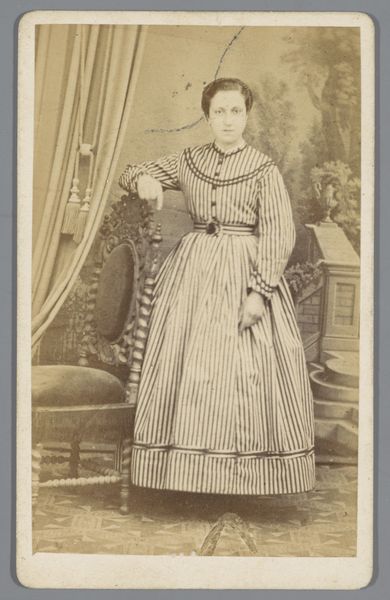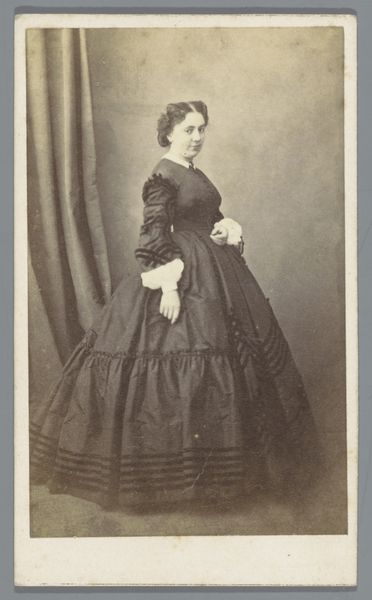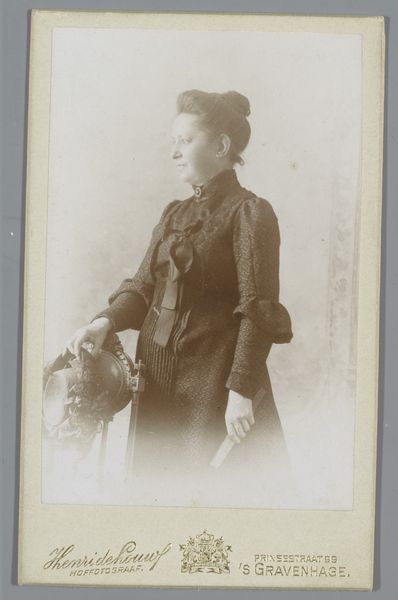
photography, albumen-print
#
portrait
#
photography
#
albumen-print
Dimensions: height 98 mm, width 58 mm
Copyright: Rijks Museum: Open Domain
Editor: Here we have a portrait by Merchier & Lecharpentier, active in the mid-to-late 19th century. It’s titled “Portret van een onbekende vrouw bij een fauteuil,” placing an emphasis, I think, on her physical relationship to that ornate chair. Made with an albumen print, there's a softness to the whole thing that's striking. What do you see when you look at it? Curator: I see a fascinating collision of material forces. Look closely at that albumen print. We’re seeing not just an image, but a manufactured object. Egg whites coating the paper, sunlight acting as a sculptor. It speaks to a rising bourgeois class eager to document and present itself, using technologies born from specific chemical processes, economic structures, and cultural aspirations. Editor: So, it’s more about the process than the sitter, in a way? Curator: Exactly! This isn’t just about an individual; it’s about industrialization’s impact on portraiture. The very accessibility of photographic portraiture, fueled by innovations in albumen printing, democratized representation but also transformed it into a commodity. Think of the labor involved in producing each print, the market that sustained these studios, and the messages this form of visual production promoted. Editor: That’s really interesting. I hadn’t considered the democratization of art as something inherently tied to production costs and materials. Curator: The details in the production itself reveal that wider context. And that’s how the material lens can truly bring the past into sharper focus. Editor: I see what you mean; examining those material conditions provides another layer to interpreting art! Thanks for pointing that out!
Comments
No comments
Be the first to comment and join the conversation on the ultimate creative platform.
